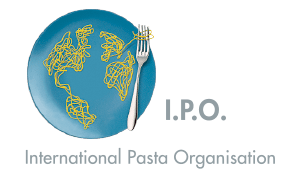The Tradition of Pasta is Pure. It takes no more than three raw ingredients to make one of the world’s most perfect traditional foods: durum wheat semolina mixed with water and sometimes eggs.
- Today, most pastas continue to be made of these age-old ingredients. With the quality control provided by modern technology, they are mixed, kneaded, extruded and machine-dried to perfection so they are lively on the plate without clumping, hold their shape and have limited or no starch release.
- As part of a healthy and balanced diet, pasta ensures the right intake of complex, slow-release carbohydrates, protein and fiber. Best of all, it becomes even more nutritious when paired with vegetables, olive oil, tomatoes and other ingredients inspired by the Italian lifestyle and found in the healthy Mediterranean diet. Pasta is a nutritious food, pure and simple.
Pasta is Sustainable. Food production has a considerable impact on the environment and pasta is proving itself to be one of the most sustainable, nutritious and available foods in the world.
- Pasta producers are continuously improving the life cycle of their products, in terms of greenhouse gas emissions, and use of water and the land in their quest for a sustainable supply chain from field to fork.
- Studies are being conducted worldwide to reduce greenhouse gases; improve production yield; identify the most sustainable agriculture systems and best practices for the cultivation of durum wheat; and improve economic and social conditions for farmers.
- Many pasta manufacturers are meeting consumer demand to reduce packaging waste. Whether it is cardboard or plastic film, the industry is increasingly focused on using 100-percent recyclable and/or compostable materials. In addition, diners can use their pasta leftovers to create even more flavorful, anti-waste dishes for everyone to enjoy. And, of course, pasta’s long shelf life contributes to less waste.
Pasta is Cutting-Edge. Around the globe, pasta makers continue to innovate, improving the nutritional profile of existing products and launching new products that are tasty, safe and contribute to a balanced diet.
- Around the world, the best varieties of wheat are selected and quality controls are in place during every stage of the production process to ensure product quality and safety.
- Pasta makers now offer a range of wholegrain products made of cereals, ancient grains and legumes like lentils, chickpeas and other beans that are gluten-free and provide nutritionally balanced, easy to prepare meals.
- Pasta producers also are looking to mirror their consumers’ values on health and ease of use. For example, pastas are now available that can be cooked in one pan and don’t require water to be boiled or drained.
- Ongoing studies on the health benefits of pasta in conjunction with many international universities continue to assess the positive impact of pasta consumption on weight, glycemic response and risk factors for diabetes and cardiovascular diseases.


